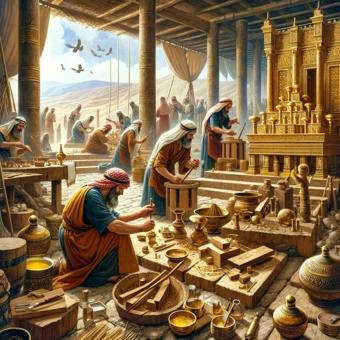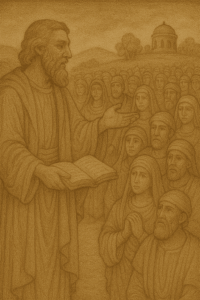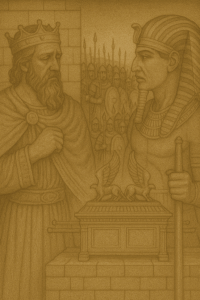Purifying the Presence of God: The Significance of the Altar of Incense
In the pages of Exodus, chapter 30 unveils the divinely ordained construction of the Altar of Incense, a sacred instrument that played a crucial role in the Israelites’ worship practices. This fragrant altar, located in the Holy Place of the Tabernacle, served as a symbol of God’s presence and a means for seeking His forgiveness and guidance.
Ascending Prayers to the Heavens: The Purpose of Incense
The Altar of Incense was used to burn fragrant incense, whose sweet aroma was believed to ascend to God, carrying with it the prayers and petitions of the Israelites. This ritual symbolized the Israelites’ desire to connect with God on a spiritual level, seeking His guidance and forgiveness.
A Reminder of Purity: The Cleansing Rituals with the Bronze Laver
In addition to the Altar of Incense, Exodus 30 also prescribes the construction and use of the Bronze Laver, a large basin located outside the Tabernacle. The priests were required to wash their hands and feet before entering the Tabernacle, symbolizing their cleansing from sin and their preparation to enter God’s holy presence.
The Laver as a Symbol of Purgation and Renewal
The Bronze Laver represented the importance of purity in approaching God. Just as the priests washed their hands and feet, the Israelites were called to maintain a pure and repentant heart in their interactions with God.
Revealing God’s Mercy and Forgiveness: The Atonement Ritual
The Altar of Incense and the Bronze Laver were not merely symbols; they also served as instruments for atonement and forgiveness. The priests would offer incense on the altar, seeking God’s mercy and forgiveness for the sins of the people. The laver further emphasized the need for individual cleansing and repentance before approaching God.
Preserving Holiness in the Sacred Space
The Altar of Incense and the Bronze Laver played a vital role in maintaining the holiness of the Tabernacle. The incense cleansed the air and symbolized the Israelites’ devotion, while the laver reminded them of the need for purity and repentance. These symbols served as constant reminders of God’s presence and His expectations for His people.
Applications in Modern Society
The symbolic significance of the Altar of Incense and the Bronze Laver offers enduring lessons for our spiritual lives. They remind us of the importance of purity, repentance, and seeking God’s forgiveness. We can strive to live lives of integrity and holiness, approaching God with reverence and seeking His guidance in all aspects of our lives.
Conclusion
Exodus 30’s detailed instructions for the Altar of Incense and the Bronze Laver reveal God’s desire for a pure and holy relationship with His people. These sacred symbols served as a foundation for the Israelites’ spiritual life and continue to inspire and guide believers today.






